NIL
15 Questions Ahead for College Sports
U.S. District Judge Claudia Wilken delivered another game-changer for college sports by granting final approval to the 10-year settlement between the NCAA, power conferences and current and former Division I athletes represented by the House, Carter and Hubbard antitrust litigations. Sportico answers the key questions about the settlement and the unresolved legal and business issues moving forward. 1) In […]
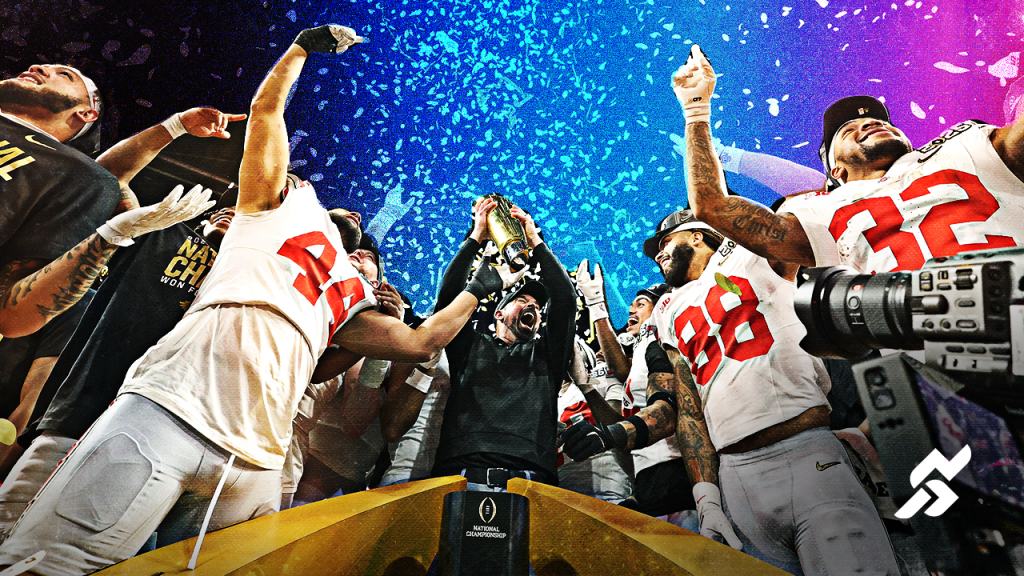
U.S. District Judge Claudia Wilken delivered another game-changer for college sports by granting final approval to the 10-year settlement between the NCAA, power conferences and current and former Division I athletes represented by the House, Carter and Hubbard antitrust litigations.
Sportico answers the key questions about the settlement and the unresolved legal and business issues moving forward.
1) In brief, what does the House settlement do?
The settlement converts intercollegiate athletics into a system that’s much closer to professional sports.
The settlement will pay out $2.8 billion in damages over a 10-year period to qualified D-I athletes who played at some point from 2016. It will compensate them for lost NIL, video game and broadcasting opportunities resulting from past NCAA eligibility rules.
The settlement also allows participating colleges to directly pay athletes a share of up to 22% of the average power conference athletic media, ticket and sponsorship revenue, with $20.5 million expected as the initial annual cap. Those payments will be in addition to athletic scholarships, which cover tuition, housing, health resources and other benefits, as well as NIL deals athletes sign with third parties.
The settlement also ends caps on the number of athletic scholarships a school can provide while adding roster limits.
Further, the settlement calls for neutral review of NIL deals that are worth more than $600. NIL Go, an entity led by Deloitte in partnership with the new College Sports Commission, will review deals to ensure they reflect fair market value.
2) Do colleges now have to share revenue with their athletes?
No, and most won’t. Colleges now have the choice to opt into a system where revenue is shared with athletes. Colleges in power conferences will do so, but most schools won’t. For example, the Ivy League, whose schools do not offer athletic scholarships, has announced it is not opting in and will maintain a more traditional view of athletes as amateurs.
3) Do colleges that opt in have to share $20.5 million with athletes?
No. The $20.5 million is a cap, not a floor. Some schools will share less. Schools that opt in will perceive it as necessary to remain competitive against rival schools for recruitment of athletes. But if rivals are sharing closer to $5 million than $20 million, expect to see similar amounts of sharing by other schools.
4) Are future athletes bound by this 10-year settlement?
Only if they agree to be bound as part of their matriculation into college. If they refuse, they could forgo the settlement’s benefits and bring their own lawsuits. The NCAA is banking on athletes seeing the settlement as favorable for the years they’ll spend in college. These athletes can land full athletic scholarships, NIL deals and potentially lucrative shares of revenue. While theoretically these athletes might negotiate more money in a freer market, whether they’d want to spend their college years in court in hopes of making that happen is another matter.
5) Could colleges sharing more revenue with male athletes than female athletes violate Title IX?
Yes. A distribution of funds that pays male athletes more could violate Title IX. To the extent those distributions count as athletic financial assistance within the meaning of Title IX, unequal sharing would prove problematic for some schools (there are different tests for Title IX compliance). There are counterarguments, including that revenue-sharing is based on the use of the athletes’ right of publicity, which is ordinarily tied to the athlete’s unique identity, and thus arguably outside the scope of Title IX. There will no doubt be litigation on this topic.
6) But didn’t President Trump rescind President Biden’s proclamation on Title IX and revenue sharing?
President Trump rescinded an agency factsheet, which is a non-binding document and not a law, issued by the Department of Education in the waning days of President Biden’s presidency. It appears the Trump administration does not view revenue-sharing as within the scope of Title IX, which suggests the Department of Justice will not take steps to stop it. However, regardless of the Justice Department’s disposition, athletes can bring Title IX lawsuits against schools through a private right of action. This matter will be resolved in the courts.
7) Does the House Settlement end NIL collectives?
No, but it will transform their roles. Collectives have operated as booster groups that are separate from the school but aligned with athletic department objectives, such as pursuit of coveted recruits. NIL collectives have been criticized for offering athletes what are termed “NIL deals” but are essentially pay-for-play arrangements. With colleges now able to pay players directly, collectives will likely shift to marketing and booster activities on behalf of athletes. Collectives can still strike NIL deals with athletes, but deals that exceed $600 will be subject to review by NIL Go to ensure they reflect fair market value.
8) Won’t review of NIL deals chill the NIL market?
It might, but it depends on what one means by NIL. NIL stems from the right of publicity, a right provided by states that protects the commercial qualities of individuals—including their name, image and likeness but also their voice, signature and anything that makes them unique. College athletes had rights to those commercial qualities long before NIL became a thing. But until 2021, NCAA eligibility rules denied athletes’ use of NIL as a condition of eligibility. Some athletes have signed what are reported as NIL deals but are better understood as pay-for-play arrangements, since they are payments conditioned on an athlete attending and staying at a school. NCAA rules forbid pay-for-play. If review of NIL deals means athletes sign deals that reflect their NIL and not going to a college, that would better align NIL deals with an individual’s actual NIL rights.
9) Won’t athletes sue when their NIL deals are rejected?
The House settlement’s design of NIL review includes an arbitration provision. This has not received much attention but is very important. As Sportico detailed, athletes whose NIL deals are rejected will first need to arbitrate before they can litigate. Arbitration is conducted in private, and federal law obligates judges to give great deference to arbitration awards. So, athletes can sue, but it will be much harder than it’s been with athlete antitrust litigation. Some plaintiffs’ attorneys who view NIL lawsuits as attractive in terms of potential money and media attention will be deterred by the prospect of overcoming arbitration.
10) Where will colleges come up with $20.5 million when many say they need money?
That’s the 20.5-million-dollar question. Colleges are facing numerous headwinds these days. There’s the enrollment cliff, where the college-age population in the U.S. will drop in the ballpark of 10% to 15% from 2025 to 2029. There’s the Trump administration’s hostility toward international students, who often pay full tuition. And there’s the cutting of government grants. All of these factors are occurring as some colleges will elect to share revenue with athletes. Don’t be surprised if colleges increase student fees as a way of generating more revenue. Also, expect some schools to restructure. On the athletics side, expect some schools to cut the number of varsity teams and replace them with club teams.
11) Could private equity be the solution to these problems?
Private equity can provide colleges with financial assistance, but the question is, what does PE want? PE is about making returns on investment, and in college athletics, that return might consist of a share of media rights, ticket sales or other perennial revenue streams. Unsettled questions remain about whether PE could gain control over school operations, such as whether to fire a coach and which athletes to recruit. Universities have numerous rules related to governance, with faculty often having an important stake and students having rights and duties as expressed in handbooks. The more control PE gains over a university, the more likely it will trigger disagreements with constituencies on campus.
12) How does the House settlement impact whether college athletes are employees?
In a direct sense, the settlement has no impact on whether college athletes are employees. The settlement merely resolves antitrust claims with a framework that Wilken approved. The classification of college athletes will need to emerge through separate legal action under labor and employment laws.
That said, colleges paying athletes through revenue-sharing resembles compensation traditionally found in an employment relationship. Colleges already exert employment-like control over college athletes, including their course work and schedule, and that control might rise in the new pay model. Attorneys who advocate for the recognition of college athletes as employees will likely point to these factors as evidence of employment.
There is ongoing litigation, Johnson v. NCAA, before a federal district court in Pennsylvania. In Johnson, D-I athletes argue they are employees within the meaning of the Fair Labor Standards Act, which would guarantee them minimum wage and overtime pay and treatment similar to that of work-study students. Although petitions involving Dartmouth College men’s basketball and USC football and basketball players for recognition of employment within the meaning of the National Labor Relations Act (NLRA) were withdrawn following Trump’s election, athletes at a public university could file a petition under their state’s labor laws that they are employees. The NLRA governs employment questions at private colleges, whereas state colleges are governed by state laws.
13) Does the House settlement make it impossible for athletes to sue the NCAA on antitrust grounds?
No. The settlement covers the issues raised by the cases. It does not, for instance, cover whether NCAA rules can cap the athletics eligibility of athletes who would otherwise have a chance to continue with a school as a grad student and earn NIL money. Also, athletes who opted out of the settlement preserved their antitrust claims. An ongoing case, Hill v. NCAA, involves opt-outs and raises the same basic claims addressed in the settlement.
14) So there is no way the NCAA can escape antitrust scrutiny?
If the NCAA wants immunity from antitrust claims, it will need the athletes to be recognized as employees, allowing them to unionize and collectively bargain. The union could then negotiate a CBA with the NCAA and other college actors. Terms in a CBA that primarily relate to wages, hours and other working conditions would be exempt from antitrust scrutiny through the non-statutory labor exemption (which reflects a series of U.S. Supreme Court decisions). But all of that is a nonstarter: The NCAA, conferences and colleges firmly oppose the recognition of college athletes as employees.
15) Will Congress save the day and pass federal college sports legislation?
Like Bill Murray in the movie Groundhog Day, bills that intend to reform college sports in some way—such as a federal NIL framework, a declaration that college athletes aren’t employees, or the granting of NCAA antitrust immunity—keep resurfacing. Every Congress since the late 2010s has had at least one bill introduced, and they more or less follow the same script—media attention and provocative social media posts, and then a failure to advance in the legislative process.
Perhaps this time around, with the House settlement complete, there will be more traction, since protecting the new world from litigation could be spun as protecting benefits for athletes. But Congress is tightly divided, and budget issues will dominate members’ attention for this summer and perhaps beyond. Also, as campaign season for the 2026 midterms approach, moving legislation will become even more difficult. Banking on Congress to solve problems is rarely a great bet, and it doesn’t seem to be here.
NIL
EA Sports Hints at Bringing Back Popular CBB Video Game
Last Updated on July 2, 2025 After more than a decade-long hiatus, college basketball video games appear to be on the verge of a major comeback, thanks to the massive success of EA Sports College Football 25. According to a memo obtained by Extra Points, EA Sports has submitted a proposal to revive its College Basketball video game series, […]
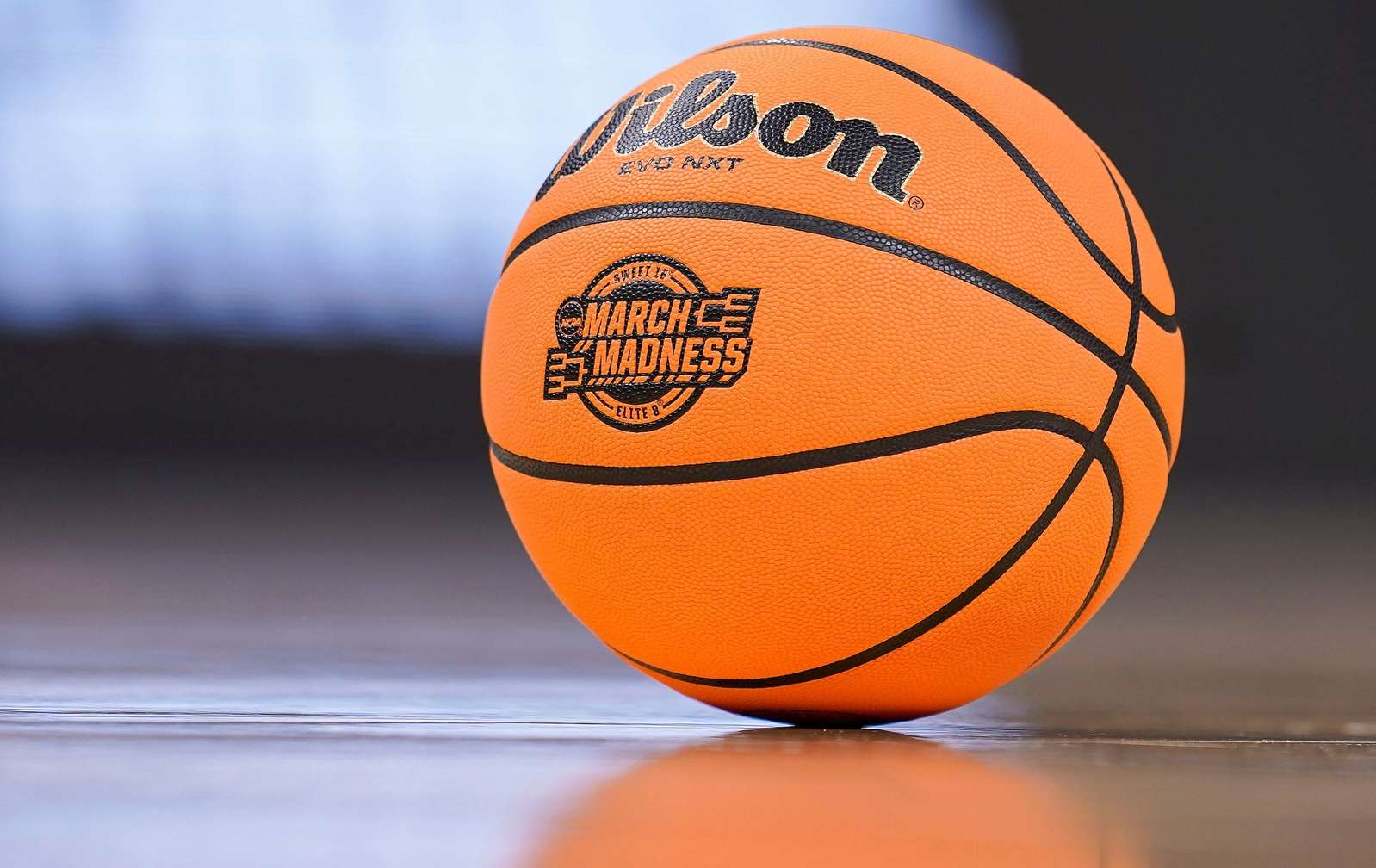
Last Updated on July 2, 2025
After more than a decade-long hiatus, college basketball video games appear to be on the verge of a major comeback, thanks to the massive success of EA Sports College Football 25. According to a memo obtained by Extra Points, EA Sports has submitted a proposal to revive its College Basketball video game series, with a tentative release date set for 2028.
The memo, sent on July 26, 2025, by the College Licensing Company (CLC) to conference offices, outlines that a Request for Proposal (RFP) was issued in November 2024. Of the five companies that expressed formal interest, three submitted official bids. CLC is recommending that conferences approve EA Sports’ bid, which includes a comprehensive, standalone simulation game featuring all NCAA Division I men’s and women’s basketball programs.
EA Sports Emerges as the Leading Bidder
Unlike competing proposals that included college content within broader sports titles or leaned more toward arcade-style action games, EA Sports pledged to build a full-fledged, standalone college basketball simulation featuring every men’s and women’s Division I basketball team.
Their vision would mirror the depth and features of their football game, incorporating modes such as Dynasty, Ultimate Team, Road to Glory, and Team Builder. Following the success of College Football 25, EA Sports plans to capitalize on the momentum of both games and explore opportunities for fans to enjoy both experiences.
As with College Football 25, real athletes would be included in the game via licensing agreements, facilitated through Compass and One Team Partners. The inclusion of real player likenesses and live service content—such as downloadable updates and optional paid add-ons—will expand and enhance the user experience while creating new revenue opportunities for participating institutions.
A New Release Strategy
Although a new college football video game is slated to come out each year according to the current licensing agreement along with other major video game titles supporting professional sports such as NBA2K, EA Sports FC and Madden, EA Sports proposed a more flexible release schedule for College Basketball, departing from the typical annual sports game cycle.
Over a six-year licensing term, the company commits to launching a minimum of three titles, with the option to release up to six. In years without a full new release, EA will offer roster and team updates via downloadable patches, while still paying 50% of the “release year” minimum royalty guarantee (MRG).
This shift acknowledges historical market differences—college football video games have traditionally outsold basketball titles by a 3:1 ratio—and provides an opportunity to test a consumer-preferred model that prioritizes quality over quantity.
There has been no clarification on which platforms would support the potential game.
Addressing the Complexities of Licensing
Unlike college football, where the NCAA is not a central rights holder, basketball poses unique licensing challenges. The NCAA owns key trademarks like “March Madness” and “The NCAA Tournament,” making their inclusion essential for a fully immersive experience.
The memo states EA Sports plans to secure licenses from individual schools, players, conferences, trophies, and the NCAA itself. However, the NCAA will not appear in the game’s title. The working name referenced in the memo is EA Sports College Basketball.
Royalties would mirror the revenue model used in College Football 25, distributing payouts to schools and conferences based on player usage metrics within the game.
What’s Next?
While EA Sports has not yet issued a public announcement, conference officials have been asked to approve the proposal by July 18. This would allow EA to begin collecting the assets necessary for development, putting them on track for a 2028-29 release.
It’s important to note that development timelines are fluid and subject to change. Still, the strength and clarity of EA’s proposal, along with its past success in the college sports space, suggest the return of a college basketball video game is not just possible—it’s likely. EA Sports and CLC have yet to comment on the proposal.
NIL
These 2-sport athletes are a cheat code in College Football 26
College Football 26 is on its way, scheduled to be released on July 10. And, in the lead-up, EA is slowly releasing the player ratings to drum up excitement for the second edition of the game in the NIL era. The College Football video game made its triumphant return last summer, after an 11-year hiatus, […]

College Football 26 is on its way, scheduled to be released on July 10. And, in the lead-up, EA is slowly releasing the player ratings to drum up excitement for the second edition of the game in the NIL era. The College Football video game made its triumphant return last summer, after an 11-year hiatus, for the first time, legally featuring real players’ names, images, and likenesses.
One of the recent ratings releases revealed the fastest players in the game, and this is where the two-sport stars of college football shine. In the NIL era, especially, playing two sports is a rare marketing opportunity for athletes, particularly when having track speed makes you a fan favorite in the video game.
NEW: EA College Football 26 Top 10 Fastest Players

Do you agree?
https://t.co/b4VhWWTozo pic.twitter.com/fxLUybPo42
— On3 (@On3sports) July 1, 2025
Many of the fastest players in college football also make an impact on the track, but two stood out this spring.
Jordan Anthony became a star sprinter for Arkansas in his sophomore season. He ran a 9.75 100-meter dash in the first round of the NCAA Division I West Regionals, the fastest in the country this outdoor season. He then went on to claim the national title in the 100 meters two weeks later. He also finished fourth in the 200 meters, and Arkansas snagged third place in the 4×100-meter relay. His outstanding performance in Eugene came nearly a month after winning the SEC 100-meter title, finishing two spots and seven tenths of a second ahead of Jelani Watkins.
Watkins was another star of the outdoor season. Again, he finished two spots and this time three tenths behind Anthony at the NCAA Championships in Eugene in June. Watkins was in his freshman season, and with so much success on the track, the former four-star recruit may be able to quickly translate his speed to the football field.
So far, Anthony has not made a major impact for Sam Pittman’s Razorbacks. The Texas A&M transfer caught eight passes for 111 yards and a touchdown last season and had two carries for just seven yards. However, that won’t stop him or Watkins from being two of the most fun players in College Football 26.
Last season, Nyck Harbor was something of a cheat code in College Football 25, with his 99 speed rating at 6-foot-5 and 235 pounds. Harbor did not run track in the 2025 season, but made the 2024 Outdoor Track and Field Championships in the 100 and 200-meter dashes for the Gamecocks. He, like many of the other players on this list, including Roderick Pleasant, who set the California state record in the 100-meter dash in high school before beginning his two-sport career at Oregon, have decided to focus their attention on the football field.
NIL
Nick Saban humor, new NIL partnership, Alabama discourse
Georgia football’s hot streak on the recruiting trail appears to have come to an end, but that was to be expected after landing 18 commitments throughout June. But even if there weren’t many recruiting updates on Tuesday, there was still a lot of interesting news that involved Georgia. Much of this news involved SEC rival […]
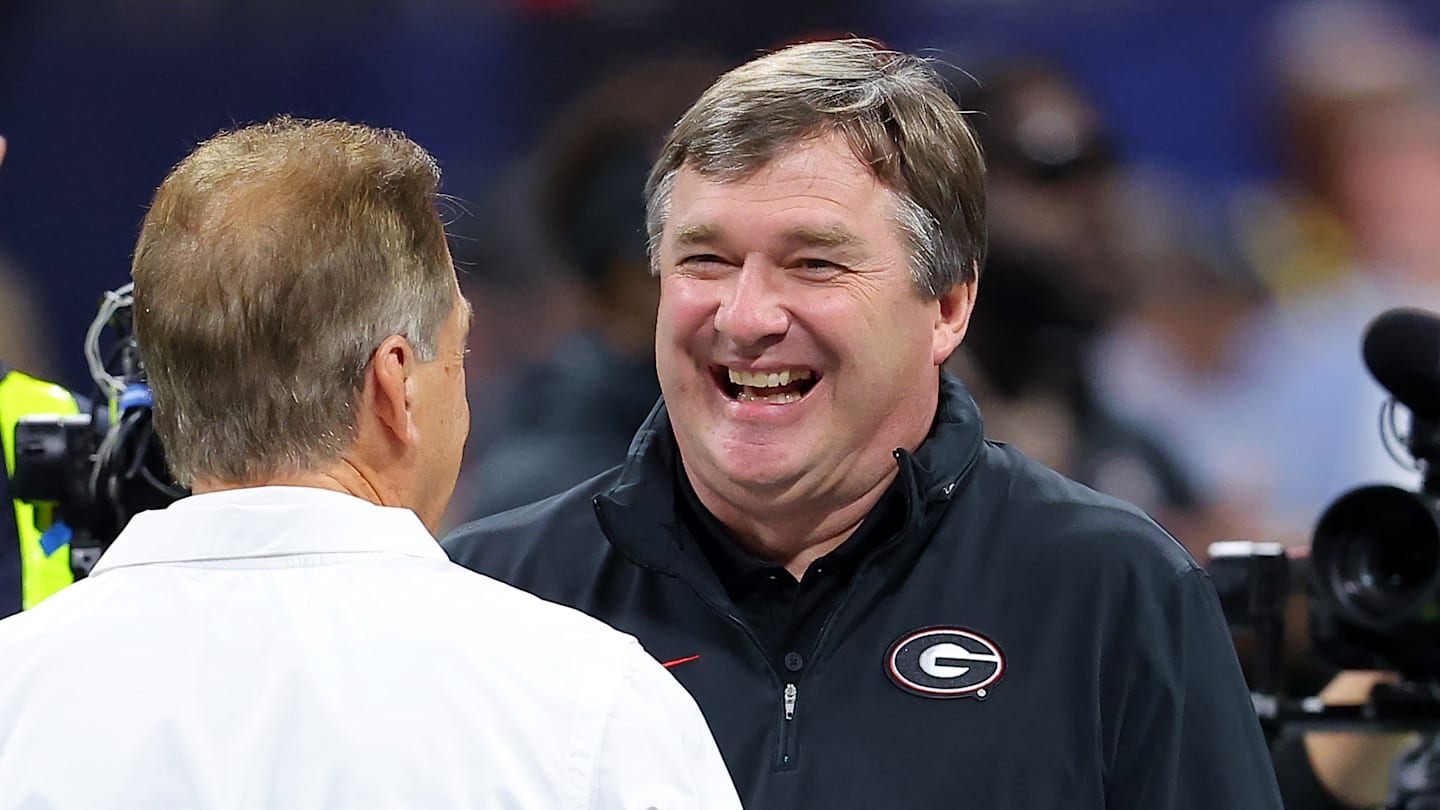
Georgia football’s hot streak on the recruiting trail appears to have come to an end, but that was to be expected after landing 18 commitments throughout June. But even if there weren’t many recruiting updates on Tuesday, there was still a lot of interesting news that involved Georgia.
Much of this news involved SEC rival Alabama, so let’s begin with a hilarious comment that was said on live TV by their former head coach.
Nick Saban gives Georgia fans a “Go Dawgs”
Even though Alabama isn’t a traditional rival of Georgia’s, it has felt like that over the past decade as the Tide were the team that prevented Georgia from reaching their potential for many years. This caused many Georgia fans to dislike head coach Nick Saban because he routinely beat Georgia while winning countless SEC and National Championships.
Fast forward to today and Saban finds himself as one of the most respected college football analysts the sport has to offer. Saban is often found on live TV talking about college football nowadays, most recently on SportsCenter as he is getting SEC fans ready for their upcoming media days. But at the end of his segment on SportsCenter, the host interviewing him got Saban to give the camera a “Go Dawgs.”
Saban immediately regretted saying this, but it was a hilarious moment that should give Saban some more fans from Georgia.
Georgia announces new NIL partnership
The NIL landscape continues to change in college athletics, and Georgia is attempting to change with it as they have announced a new NIL partner. This partnership is with Learfield who will be tasked with assisting all of Georgia’s student-athletes in finding new NIL opportunities they can take advantage of.
Georgia was already one of the top athletic departments when it came to NIL, and that was seen this past year as UGA had four National Championship winning teams while also finding a lot of success in many other sports as well. And this new partnership with Learfield should help Georgia continue to succeed even more in this new age of college athletics.
Alabama fans name Georgia the SEC’s top program
There is a very real debate that can be had between Georgia and Alabama regarding who the best program in the SEC is. Georgia fans think they deserve that title as the reigning SEC Champion and the last team in the conference to win a national title, but Alabama fans can claim their vast success is still recent enough and Georgia still can’t beat them.
But a few Alabama fans may have settled this debate as they are siding with Georgia and saying they have passed Alabama as the best program in the country. There reasons for this include the recent championships as well as sending more players to the NFL in recent years.
So the next time an Alabama fan tries to claim they are still the better program, be sure to remind them that even some Alabama fans think Georgia is the best team now.
NIL
How college football star Jeremiah Smith signed with Adidas while starring for Nike-based Ohio State
Ohio State wide receiver Jeremiah Smith has signed with Adidas, a major move for the sportswear and footwear giant ahead of college football’s 2025 season. Smith registered 76 receptions for 1,315 yards and 15 touchdowns last season as a five-star true freshman sensation for the national champions, who are a unanimous top five team ahead […]
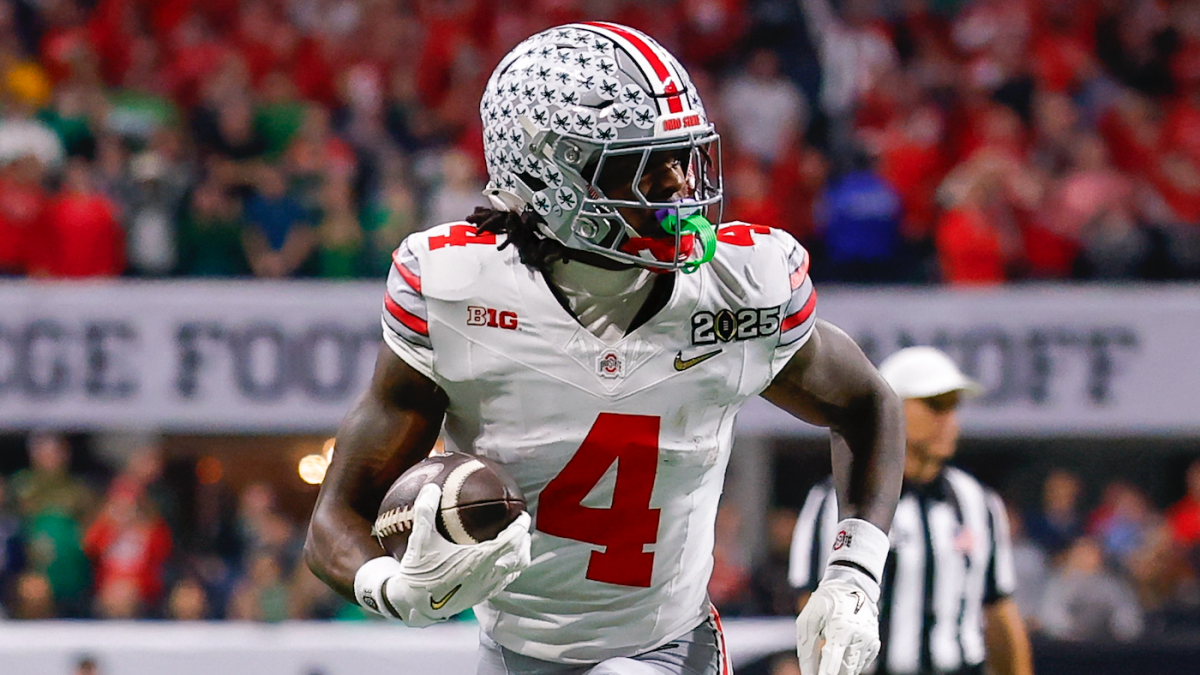
Ohio State wide receiver Jeremiah Smith has signed with Adidas, a major move for the sportswear and footwear giant ahead of college football’s 2025 season. Smith registered 76 receptions for 1,315 yards and 15 touchdowns last season as a five-star true freshman sensation for the national champions, who are a unanimous top five team ahead of the new campaign.
CBS Sports spoke to a source with knowledge of the agreement Wednesday, who acknowledged Smith would still wear Nike with the Buckeyes this season. Ohio State signed a then record-setting 15-year agreement with the Swoosh in 2016 to be the Buckeyes’ official apparel sponsor.
Smith is not tied to the Swoosh despite Ohio State’s relationship with Nike.
“Off the field, Jeremiah will be in Adidas product, along with any brand marketing (spots) and individual social media posts,” the source said.
Smith had multiple offers from various competitors and ultimately chose to represent Adidas moving forward.
The source noted that a similar scenario previously unfolded for current WNBA rookie Hailey Van Lith, who initially transferred from Louisville — an Adidas school — to Nike-sponsored LSU prior to finishing her career last season at TCU last season.
Van Lith’s NIL deal with Adidas carried over to Baton Rouge. She was one of 15 female student-athletes to sign with the brand in 2022.
Smith was a breakout performer in last season’s College Football Playoff, lighting up Tennessee and Oregon with multi-touchdown outings before clinching the national title against Notre Dame with a clicking 56-yard reception in the waning moments.
“One of the most memorable moments from last season was losing my black stripe and officially becoming a Buckeye,” Smith said in a press release. “Fast forward a year and I’m blessed to be adding three, joining the fastest brand in football. It’s crazy to be partnering with a brand that has such a talented roster of players and that I’ve been wearing since I was a young kid. We’re not done yet.”
Smith told The Athletic of his new deal that being a part of the brand was “something special” as his football career continues to leap forward.
“I’ve been wearing Adidas since I was a young kid, 11, 10 years old,” Smith said.
Smith joins an Adidas portfolio that includes Patrick Mahomes, Travis Hunter and former Ohio State stars Garrett Wilson and Emeka Egbuka. He shattered numerous freshman program records in 2024 and is one of this fall’s Heisman frontrunners.
“We’re building a roster of collegiate athletes that are writing new chapters, creating legacies and shattering records for their programs and universities,” Chris McGuire, adidas vice president of sports marketing, said. “As the face of the next generation of elite football players, Jeremiah has demonstrated an unwavering commitment to the game, making him a perfect fit for our roster of athletes.”
NIL
Sooner News Daily | Wednesday (July 2, 2025) – The Football Brainiacs
College Football Certified game wreckers 


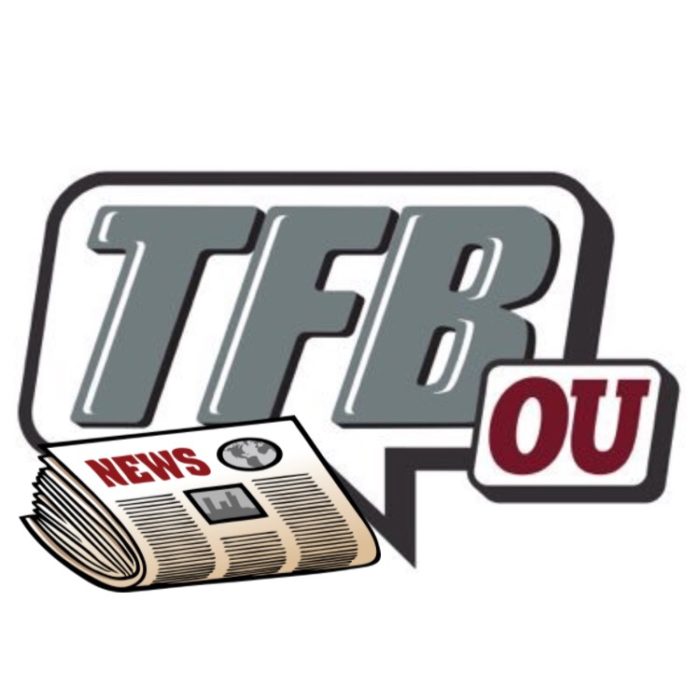
College Football
Certified game wreckers
@EASPORTSCollege
91 » @John_Mateer4
90 » @THEJAYDNOTT pic.twitter.com/u3EUDDSVO6
— Oklahoma Football (@OU_Football) July 1, 2025
Mel Kiper Jr. was the first-ever guest on The Dari Nowkhah Show.
Kiper spoke on what OU has in Jim Nagy as the General Manager.
“I don’t think there’s a better evaluator of talent out there.” pic.twitter.com/6KBwZNmWFs
— The REF (@KREFsports) July 1, 2025
NEW: EA College Football 26 Top 20 QBs
Do you agree?
https://t.co/4kJOkqWN5i pic.twitter.com/kUcSjTkEUL
— On3 (@On3sports) July 1, 2025
If you’re confused about all of this, here’s a story detailing the House revenue-share concept from last month when the settlement was approved – https://t.co/kQ1LWX9GHr
— Ross Dellenger (@RossDellenger) July 1, 2025
With the new rev-share reality now upon us, here’s a detailed projection of how schools are expected to pay athletes, both in 2025-26 and the years to come.https://t.co/eQUQ95HE3c
— Zach Barnett (@zach_barnett) July 1, 2025
OU Sports & News
Welcome to the 405
Chloe Rodriquez has officially signed and will join the Sooners as a transfer from Lamar! We’re so excited to welcome you to OU
» Two-time Southland Conference Champion
» 2024 U.S. Olympic Team Trials Qualifier pic.twitter.com/Tzz7tW8sWP— Oklahoma T&F & XC (@OU_Track) July 1, 2025
Welcome to the 405
Ahmed Sayf Kadri has officially signed and will join the Sooners as a transfer from Eastern Kentucky
» 2023 NCAA XC Championships Qualifier
» 3-time NCAA Outdoor Championships Qualifier (800m, Steeplechase x 2)
» 2024 African Games Championships Finalist… pic.twitter.com/xNf7CeXiqb— Oklahoma T&F & XC (@OU_Track) July 1, 2025
NIL
EA Sports College Football 26 Player Rankings: Top 20 Quarterbacks
EA Sports College Football 26 rolled out some more player rankings and revealed its top 20 quarterbacks. Get ready to play as these guys with their respective schools. Or of course, try to get them to transfer to your favorite program in dynasty mode! The list is pretty close to the standard ranking of quarterbacks […]

EA Sports College Football 26 rolled out some more player rankings and revealed its top 20 quarterbacks. Get ready to play as these guys with their respective schools.
Or of course, try to get them to transfer to your favorite program in dynasty mode! The list is pretty close to the standard ranking of quarterbacks throughout college football this year.
Without further ado, let’s dive into EA’s QB rankings for the new edition of the game. They are in order to go along with their actual rating.
There’s been a lot of buzz lately about Klubnik being the top quarterback in college football. Heck, some early mock drafts have him as the top QB, if not the No. 1 overall pick next spring.
Last season, he had a career year. Klubnik had 3,639 yards, 36 touchdowns, six interceptions and a 63.4% completion percentage to go along with 463 rushing yards and seven rushing touchdowns.
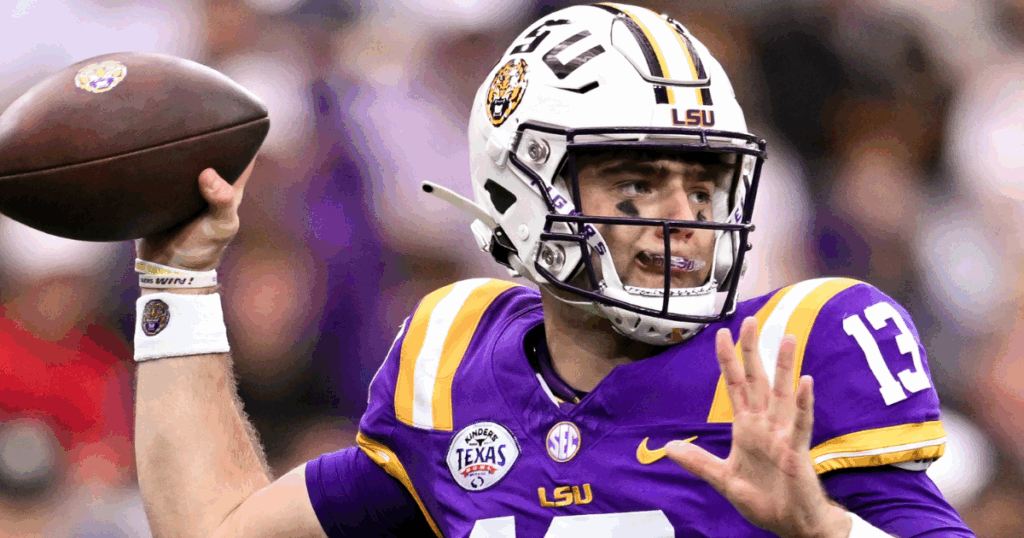
Nussmeier is a popular pick to win the Heisman Trophy this coming season, among other quarterbacks. But he’s proven he could fill the shoes of Jayden Daniels and could get LSU to the College Football Playoff this fall.
Last season, Nussmeier threw for 4,052 yards, 29 touchdowns, 12 interceptions and a 64.2% completion percentage. Expect those types of numbers once again this fall.
3. Drew Allar, Penn State – 92
Drew Allar has the build, the skill and the poise to be one of the best QBs in the country. It’ll be interesting to see how he follows up last year’s run to the CFP semifinals with national championship expectations in 2025.
Allar was a more accurate quarterback last year and tossed 24 touchdowns. He also threw for 3,327 yards but had eight interceptions compared to two in 2023.
4. Sam Leavitt, Arizona State – 91
Leavitt broke out last season, helping the Sun Devils win the Big 12 and make the College Football Playoff. The hype train around Arizona State is still chugging along.
Last season, he threw for 2,885 yards, 24 touchdowns, six interceptions and a 61.7% completion percentage. He added 443 rushing yards and five rushing touchdowns.
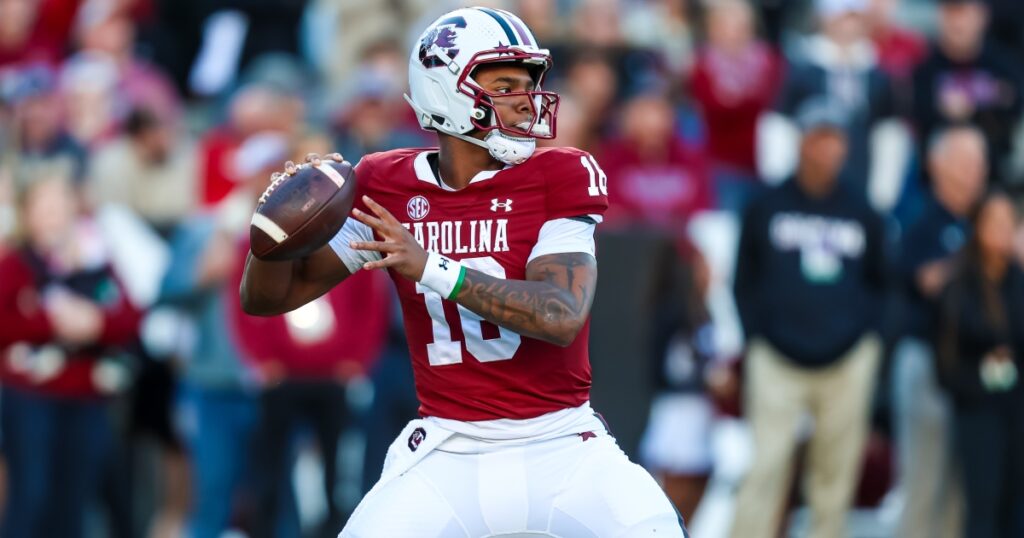
Sellers is a dual threat quarterback and would be fun to play in a video game wouldn’t he? Especially after his 2024 season and following some development, he’ll be a player to watch in the SEC this fall.
Last year, Sellers threw for 2,543 yards, 18 touchdowns, seven interceptions and a 65.6% completion percentage. He also ran for 674 yards and seven touchdowns.
Mateer is about to get way more hype now that he’s in the SEC. That’s just the way it works despite his really productive season as a quarterback at Washington State.
Last year, he threw for 3,139 yards, 29 touchdowns, seven interceptions and a 64.6% completion percentage. He also ran for 826 yards and 15 touchdowns. Good luck stopping him!
Beck gets a fresh start at Miami following his transfer this offseason. The former Georgia quarterback had a lot of ups with the Bulldogs, but also some downs and ended last year with a season-ending injury.
Last season, Beck was productive, but his completion percentage went down (64.7%) and interceptions went up (12). Still, he threw for 3,485 yards and 28 touchdowns in 13 games.
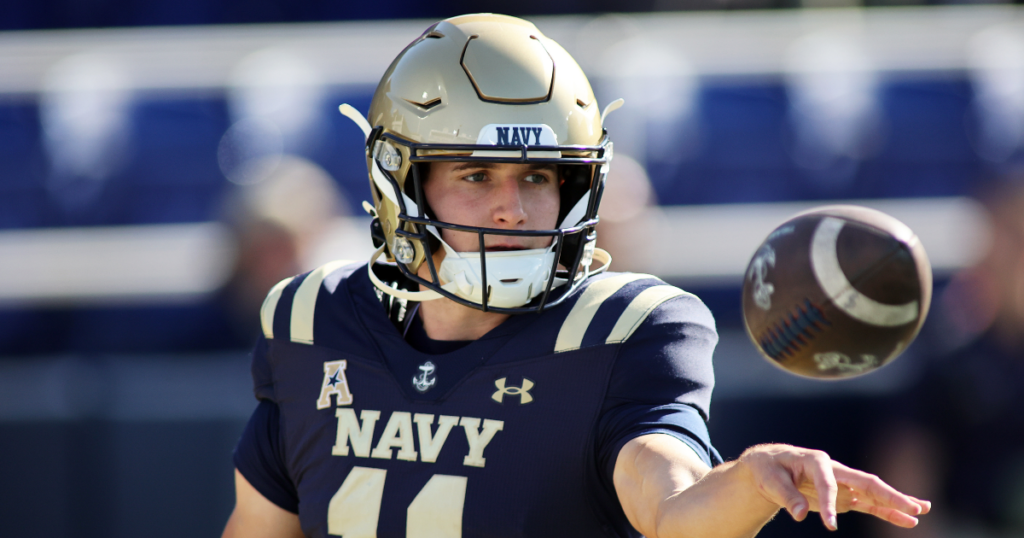
This man is a hammer! Horvath would run through a brick wall over passing it any day! In all seriousness, he’s a quality quarterback for Navy.
As a passer, Horvath only threw for 1,353 yards, 13 touchdowns, four interceptions and a 57.6% completion percentage. But as a runner, he’s a stud: 1,246 yards, 17 touchdowns and 7.1 yards per carry.
Manning was already getting a lot of hype going into his first full year as a starting quarterback. Now, the latest EA video game already has him as a top 10 player.
In limited opportunities, and two starts, Manning threw for 939 yards, nine touchdowns and two interceptions last year. He can also run really well, clocking in as one of the fastest QBs in the country, and he ran for 108 yards and four touchdowns on just 25 attempts.
10. DJ Lagway, Florida – 90
Lagway has a lot of potential as a quarterback and it seems like EA is banking on it as well. As long as he develops and stays healthy, he could really elevate Florida to new heights in 2025.
As a freshman, Lagway threw for 1,915 yards, 12 touchdowns, nine interceptions and a 59.9% completion percentage. If he cuts down on the turnovers and the offensive symmetry improves, it should be a good year.
11. Avery Johnson, Kansas State – 89
12. Kevin Jennings, SMU – 89
13. Darian Mensah, Duke – 89
14. Luke Altmyer, Illinois – 89
15. Kaidon Salter, Colorado – 88
16. Nico Iamaleava, UCLA – 88
17. Diego Pavia, Vanderbilt – 88
18. Rocco Becht, Iowa State – 88
19. Jake Retzlaff, BYU – 88
20. Sawyer Robertson, Baylor – 88
-

 Motorsports3 weeks ago
Motorsports3 weeks agoNASCAR Weekend Preview: Autódromo Hermanos Rodríguez
-
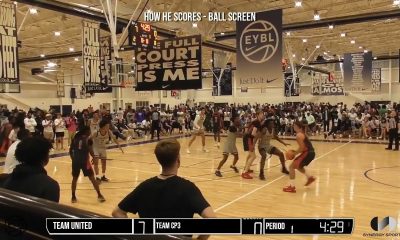
 College Sports3 weeks ago
College Sports3 weeks agoIU basketball recruiting
-

 Social Media3 weeks ago
Social Media3 weeks agoPune Athletes Make Global Mark at IRONMAN Hamburg and Brazil 2025
-
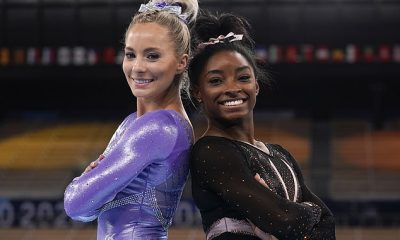
 Health3 weeks ago
Health3 weeks agoGymnast MyKayla Skinner Claims Simone Biles 'Belittled and Ostracized' Her amid Riley …
-

 Motorsports3 weeks ago
Motorsports3 weeks agoNASCAR Race Today: Mexico City start times, schedule and how to watch live on TV
-

 Motorsports3 weeks ago
Motorsports3 weeks agoNASCAR in Mexico City: Where to watch, start time, stream, lineup, race preview for inaugural Viva Mexico 250
-

 College Sports6 days ago
College Sports6 days agoWAC to Rebrand to UAC, Add Five New Members in 2026
-

 College Sports3 weeks ago
College Sports3 weeks agoLivvy Dunne honors boyfriend Paul Skenes with twist on LSU jersey
-

 Health3 weeks ago
Health3 weeks agoChicago Sky receive unfortunate reaction to 'mental health' statement with Angel Reese
-

 High School Sports3 weeks ago
High School Sports3 weeks agoNew Bedford top stories







 relive Dylan Harper’s special night
relive Dylan Harper’s special night






























